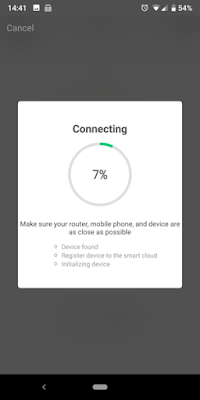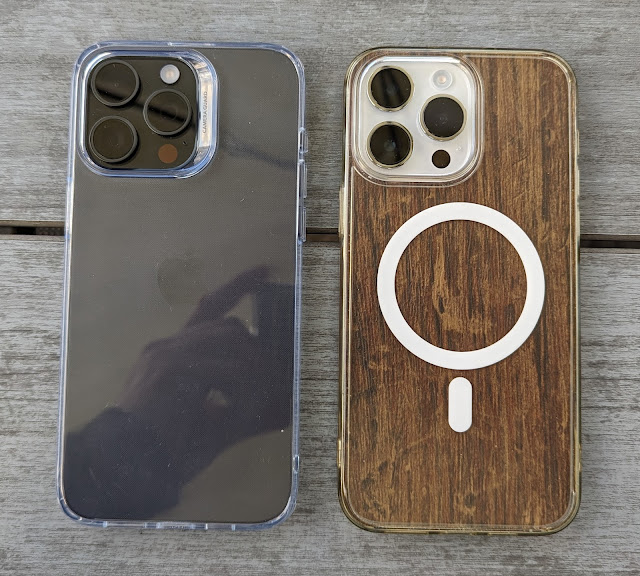Review: Blitzwolf Smart Socket (BW-SHP4)
The 'Internet Of Things' (IOT) has gotten itself some bad press - and probably for good reason. Hooking up gadgets in your home to the wider Internet has all sorts of security implications. The usual example is that vulnerabilities in the Internet-facing APIs in each gadget could be exploited for a bad guy to take control.
Real life exploiting of such vulnerabilities is rare, though. Not least because there's nothing in it for the 'bad guys'. How would taking over your lights or heating or sound system benefit anyone else, other than causing chaos?
But all this was in my mind as I unboxed a couple of (240V/10A) Smart Sockets here, from Blitzwolf (£16 on Amazon UK or try Banggood or see the product home page here). How far would I extend my home's electrical functions onto the Internet? I decided that as long as I stayed away from gadgets which provide heat (toasters, fan heaters, kettles) then I'd be OK. I mean what's the worst that could happen with other electrical items?
So, ground rules set, I tried setting up the two Smart Sockets and quickly came to two conclusions:
1. Configuring the sockets is a doddle. Press and hold the side button on each to enter pairing mode and then 'Add a device' in the Blitzwolf IOT application. It's found within 30 seconds and then you're in control. One tap to activate the socket (from anywhere in the world), another tap to deactivate it. All very slick and worked first time.
2. Finding 'killer' uses for the sockets is much harder. Yes, it's easy to put these in line for a table lamp or Christmas tree or radio, and so on, but none of these really need remote activation - you'll usually be in the same room as these, etc.
The most useful things would be time-saving functions like starting the kettle boiling or starting a fan heater (to pre-warm a room), but everything I can think of requires set-up. So, for example, the kettle would need pre-filling with water and leaving in the 'on' position on the appliance. Ditto the fan heater (with thermostat set and power setting applied). My wife suggested a toaster, but a) you'd have to pre-load this with bread, and b) most modern toasters don't even accept a load unless there's power.
Plus all these real world examples also conflict with my self-imposed rule about not using IOT with powered appliances that involve heat.
Which is a little disappointing, but if you have a genuine use for something that needs turning on and off over the Internet then I can vouch that these Blitzwolf Smart Sockets work just fine.
With one caveat - the round form factor is quite large and their bodies got in the way of some of my wall socket switches, as shown below:
So you'd have to make sure that your use case involved sockets with switches more widely spaced.
So that's a lot of caveats and uncertainty - befitting IOT generally, at least as it stands at the moment. Well done to Blitzwolf for creating sleek gadgets that... just work. But there's more to think about than how well the connected electronics function here!
Me? I'm still scratching my head to find the optimum safe use of this clever tech!!
Real life exploiting of such vulnerabilities is rare, though. Not least because there's nothing in it for the 'bad guys'. How would taking over your lights or heating or sound system benefit anyone else, other than causing chaos?
But all this was in my mind as I unboxed a couple of (240V/10A) Smart Sockets here, from Blitzwolf (£16 on Amazon UK or try Banggood or see the product home page here). How far would I extend my home's electrical functions onto the Internet? I decided that as long as I stayed away from gadgets which provide heat (toasters, fan heaters, kettles) then I'd be OK. I mean what's the worst that could happen with other electrical items?
So, ground rules set, I tried setting up the two Smart Sockets and quickly came to two conclusions:
1. Configuring the sockets is a doddle. Press and hold the side button on each to enter pairing mode and then 'Add a device' in the Blitzwolf IOT application. It's found within 30 seconds and then you're in control. One tap to activate the socket (from anywhere in the world), another tap to deactivate it. All very slick and worked first time.
2. Finding 'killer' uses for the sockets is much harder. Yes, it's easy to put these in line for a table lamp or Christmas tree or radio, and so on, but none of these really need remote activation - you'll usually be in the same room as these, etc.
The most useful things would be time-saving functions like starting the kettle boiling or starting a fan heater (to pre-warm a room), but everything I can think of requires set-up. So, for example, the kettle would need pre-filling with water and leaving in the 'on' position on the appliance. Ditto the fan heater (with thermostat set and power setting applied). My wife suggested a toaster, but a) you'd have to pre-load this with bread, and b) most modern toasters don't even accept a load unless there's power.
Plus all these real world examples also conflict with my self-imposed rule about not using IOT with powered appliances that involve heat.
Which is a little disappointing, but if you have a genuine use for something that needs turning on and off over the Internet then I can vouch that these Blitzwolf Smart Sockets work just fine.
With one caveat - the round form factor is quite large and their bodies got in the way of some of my wall socket switches, as shown below:
So you'd have to make sure that your use case involved sockets with switches more widely spaced.
So that's a lot of caveats and uncertainty - befitting IOT generally, at least as it stands at the moment. Well done to Blitzwolf for creating sleek gadgets that... just work. But there's more to think about than how well the connected electronics function here!
Me? I'm still scratching my head to find the optimum safe use of this clever tech!!








Comments